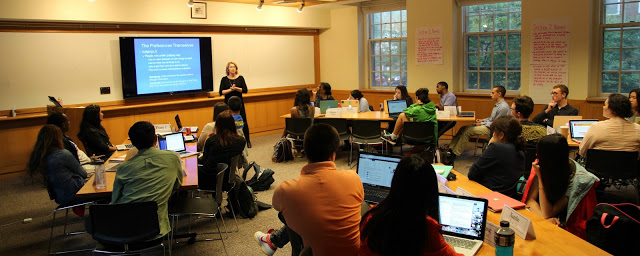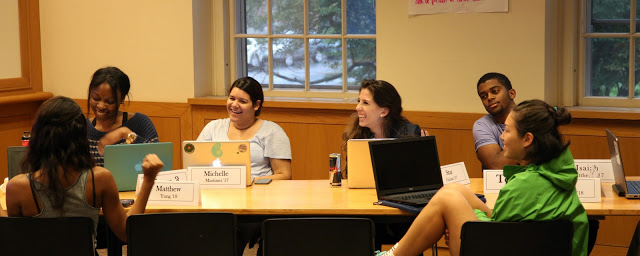- Public Policy
- Leadership
- Funding
- News & Events
- About the Center
Back to Top Nav
Back to Top Nav
Back to Top Nav
Back to Top Nav
Professor Jennifer Sargent led MLDP’s second session, entitled “Using Your Strengths for Effective Professional Communication.” Before beginning the MLDP program, all participants were asked to complete the Myers-Briggs Type Indicator (MBTI) test, which indicates various preferences related to how people perceive the world and make decisions. Professor Sargent helped MLDP participants interpret their MBTI results and understand their strengths, and also led a discussion about how leaders can most effectively interact with those with different preferences.
 |
| Professor Jennifer Sargent interprets MBTI results with MLDP participants. Photo by Weijia Tang '18. |
She began the session with a simple activity in which several groups, organized by similar MBTI types, planned a hypothetical vacation over the course of 10 minutes. Each group ended up focusing on different aspects of their vacations, and Professor Sargent used these distinct concentrations to highlight how people with different personalities may work in different ways. She then launched into a more in-depth discussion of each of the four preferences pairs defined by MBTI, explaining what each personality type does well, and where each personality type can struggle.
 |
| MLDP participants split into groups according to their MBTI results to participate in a vacation-planning activity. Photo by Weijia Tang '18. |
Participants were surprised to find how accurate their MBTI results were, and agreed with Professor Sargent that learning how to interact with and unite colleagues with different preferences is very important in leading any group. Justin Chan ’16 echoed this sentiment, stating, "I really appreciated how the session addressed personalities in group dynamics. You often forget about different personality traits in a work setting." Another participant added, “I enjoyed the second session for the personal engagement of the MBTI types. It was a relatable and applicable lesson.”